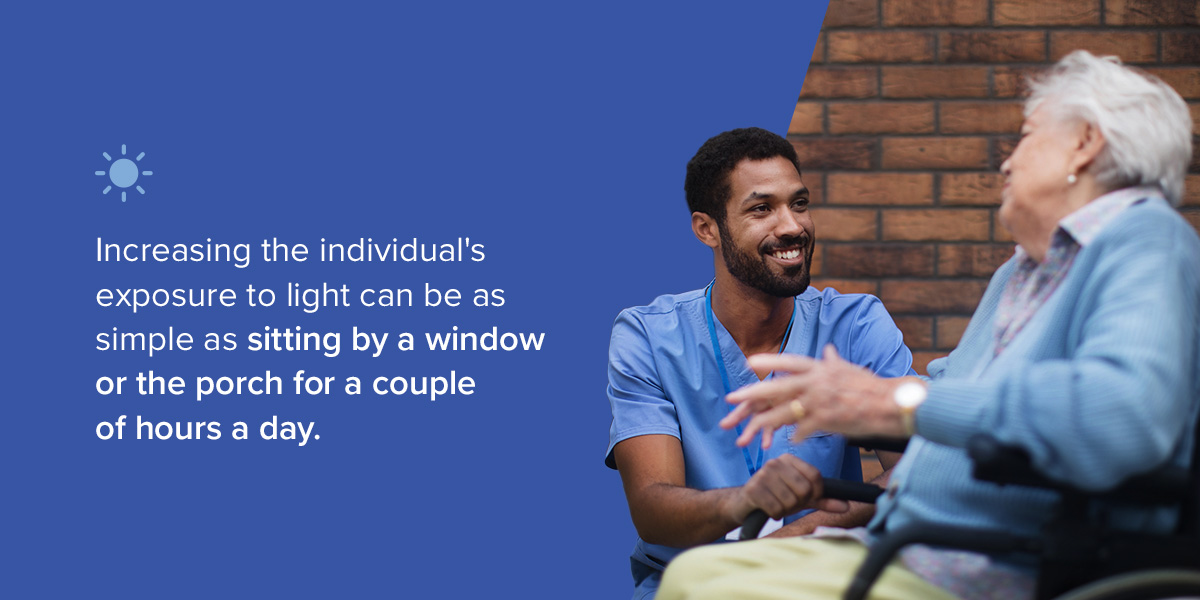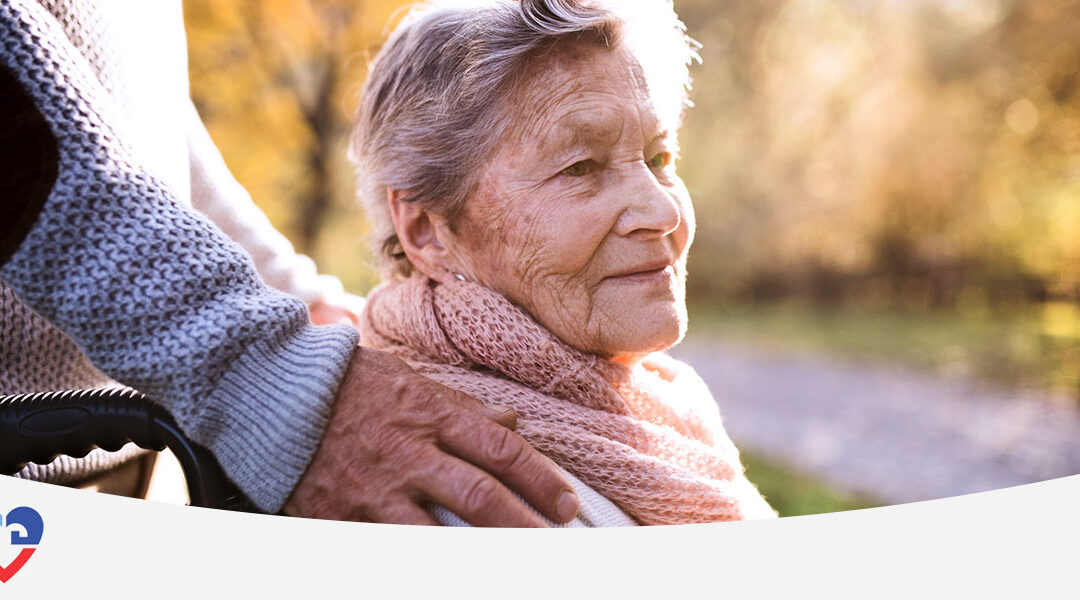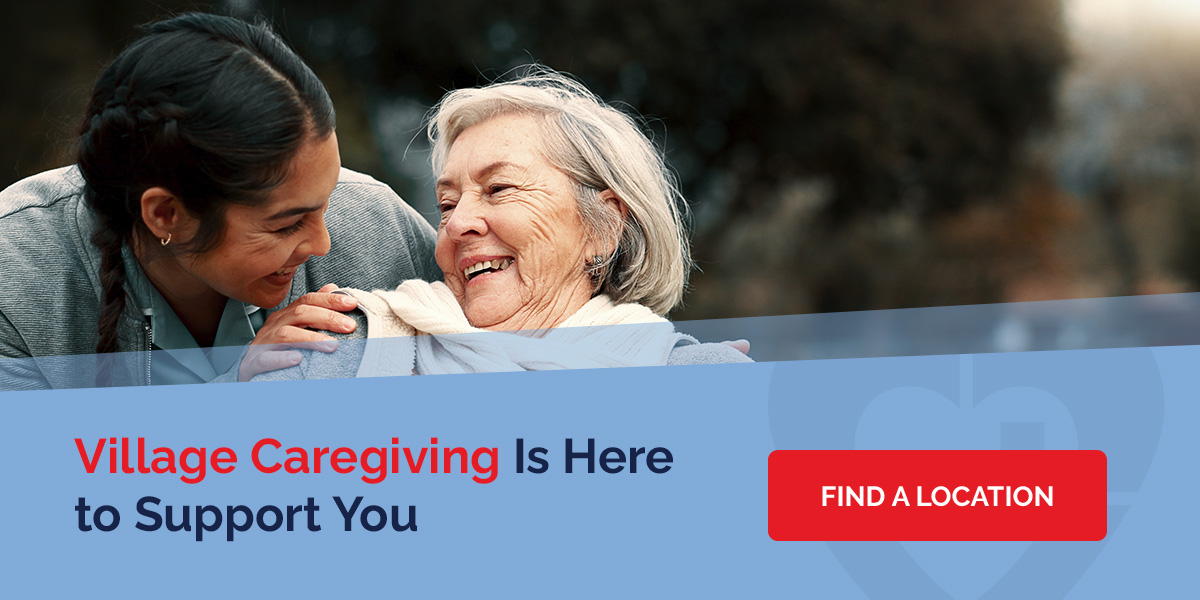Mood changes are a natural part of the human experience. But if you or your loved one’s mood shifts as the seasons change and you find it challenging to overcome feelings of despair during winter months, you may have seasonal depression.
What exactly is seasonal depression? Is it dangerous? Below, we explore seasonal depression in older adults and how best to support someone who may be experiencing it.
What Is Seasonal Affective Disorder?
Seasonal Affective Disorder (SAD) is a type of depression with seasonal patterns. Someone with this condition will experience mood shifts when seasons change. For many, symptoms become more severe during the fall and winter months when there is less sunlight and subside during spring and summer. This is why many refer to it as “winter depression.”
Symptoms of seasonal depression may include:
- A continuous sad, anxious or low mood almost every day for at least two weeks
- Feelings of irritability, restlessness, frustration, hopelessness, worthlessness or guilt
- Sleeping longer or during the day and still lacking energy
- Finding it hard to fall or stay asleep or to get up in the morning
- Loss of appetite or increased carvings that may lead to overeating and weight gain
- Loss of interest in everyday activities
- Difficulty concentrating or remembering
- Thoughts of death
- Social withdrawal
- Aggressive behavior
Who Is at Risk?
The National Institute of Mental Health highlights that millions of Americans likely experience SAD but may not know they have it. SAD tends to be more common among women, and winter-pattern SAD is more common than summer-pattern. Although the disorder can affect people of all ages, older adults can be particularly vulnerable if they live in climates that experience long winters. Studies have shown that SAD is more common among people who live far north or south of the equator. These areas tend to have decreased sunlight, especially during winter.
People who have relatives with SAD or other forms of mental health conditions may be more likely to develop the disorder. If you or your loved one has been diagnosed with a mood disorder like major depressive disorder (MDD) or bipolar disorder, the symptoms may worsen during winter months.
Effective Coping Strategies and Treatments for SAD
If you or someone you know is experiencing symptoms of seasonal depression, it’s important to reach out to a health care provider for proper testing and diagnosis. Treatment can be similar to other types of depression:
- Counseling: Counseling is a form of talking therapy where the patient talks to a therapist about their thoughts and feelings.
- Cognitive behavioral therapy (CBT): In CBT, trained therapists aim to help older adults with SAD change their thinking patterns through a structured approach.
- Medications: A doctor may prescribe antidepressants to treat depression symptoms.
- Light exposure: Exposure to sunlight may help improve symptoms. Making light exposure a part of your morning routine will have the most effect.
You may not be able to prevent your initial diagnosis of SAD. However, after consulting with your health care provider, you may be well-equipped to handle the condition more effectively using some of the above-mentioned strategies.
Benefits of Light Therapy
Light therapy involves exposing a patient to an artificial light source that mimics natural outdoor lighting. This exposure causes a change in brain chemicals, which can affect a person’s mood and help regulate the sleep cycle. There are different types of light therapy, and they are used to treat symptoms of conditions including MDD and SAD.
Specifically, light therapy helps:
- Increase alertness
- Balance the activation of serotonin in a person’s brain, which is a key mood regulator
- Stabilize sleeping patterns
- Align a person’s 24-hour brain cycle with their circadian rhythm
The effectiveness of light therapy depends on various factors, such as the duration of use, light wavelength and an individual’s circadian rhythm. It is generally safe, but talk to your doctor before you start if you have a preexisting health condition like bipolar disorder or if you currently take medication.
How Caregivers Can Support Older Adults With SAD
As a family caregiver, there are many ways in which you can support an older adult with SAD.
1. Increase Their Exposure to Light

Increasing the individual’s exposure to light can be as simple as sitting by a window or the porch for a couple of hours a day. If they live in an area currently experiencing winter or minimal sunlight, light therapy boxes may help compensate for the lack of natural light when used correctly.
2. Encourage Stress Management Techniques
Multiple stress management techniques can be effective in treating symptoms of seasonal depression. For example, getting enough sleep can help your loved one feel well-rested, and maintaining a routine promotes feelings of calmness and control. Mindfulness meditation can help reduce anxiety, low moods and other stress-related conditions.
3. Develop a Balanced Diet
Nutrition is a critical area to focus on when caring for mental health. Studies show an undeniable link between what we eat and how we feel. A balanced diet for an older adult with SAD includes foods that support mood and brain function, such as:
- Salmon and rainbow trout
- Whole-grain breads and pastas
- Green leafy vegetables
- Berries
4. Encourage Regular Exercise
Regular exercise is an effective way for older adults with seasonal depression to manage symptoms. Even gentle workouts can help ease feelings of anxiety and depression by shifting the mind away from problems. Thinking about trying to walk five minutes faster than yesterday can be a great way to keep a person’s mind away from negative thoughts. Exercise is also one of the most effective ways to release endorphins, which are “feel-good” hormones that can improve a person’s well-being.
When you encourage an older adult to exercise more, it’s important to be mindful of their physical limitations. Indoor exercises are also good options, especially when the weather doesn’t permit an outside activity. Examples include chair exercises, yoga and light stretching.
5. Prevent Social Isolation
Multiple studies have linked social isolation with depression. While social interactions can be challenging during cold winter when most people prefer being warm inside, technology can play an essential role in bridging this gap.
As a family caregiver, you can help an older adult by:
- Setting up regular video chats so they can stay connected with their loved ones.
- Encouraging them to participate in group activities, like volunteering or joining a club for older adults.
- Organizing frequent phone calls with family members.
Village Caregiving Is Here to Support You
Seasonal depression isn’t something to brush off. With the right plan, treatment and support, caregiving for mental health can help you or your loved one feel better and thrive as the seasons come. Village Caregiving is a dynamic and supportive in-home care agency that helps older adults live long, dignified, happy lives. To learn more about us and what we offer, fill out our online contact form or search for the Village Caregiving location closest to you.



Recent Comments